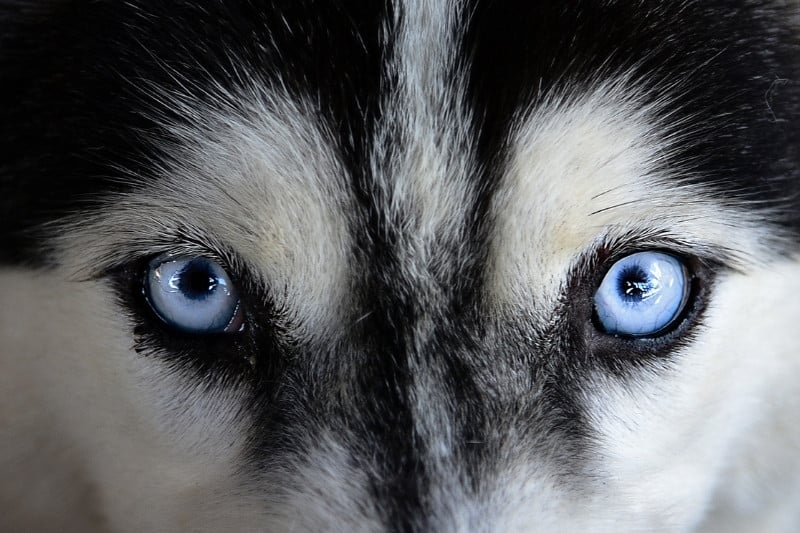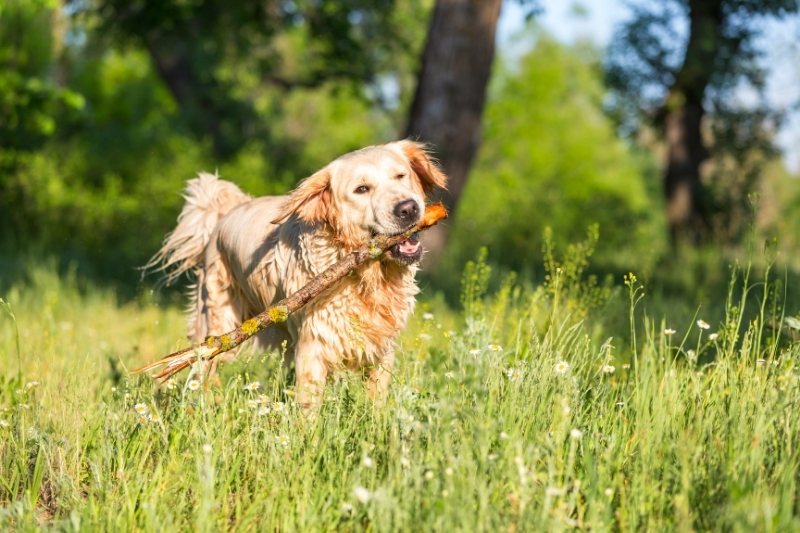Weimaraner vs. Great Dane: what are the differences?

Often large dogs that originate from Germany can easily get mixed up on paper. After all, many of them used to be mighty hunting dogs or guard dogs, making it difficult for people to identify amongst their instincts.
The same goes for two large dog breeds, the Weimaraner and Great Dane.
Regularly many people mix the Great Dane and Weimaraner up due to their qualities. But the truth is, apart from their size, they actually have unique individual characteristics and qualities.
To help uncover them and allow you to identify the Weimaraner Great Dane more easily, keep on reading.
History
To fully understand each large dog's differences, we must rewind back to their origin.
Great Dane origin

Many people get confused with the Great Dane dog breed's origin, thinking it's from Denmark. The truth is, while it's a popular dog across Denmark, this dog comes from Germany. It's believed that this dog has existed for over 400 years.
In the 1800s, the Great Dane became more developed and domesticated. Still, today some people use them as guard dogs to protect their assets from potential robbers.
Weimaraner origin

The Weimaraner dog is believed to have first come into existence in Germany in the 19th century. It came from the town called Weimaraner in Germany and was named after a Duke who loved to hunt.
Typically they were used for hunting boar, deer, and bear. Then later, they were kept for hunting small animals such as foxes, rabbits, and fowl.
The difference?
Well, looking at the history of the Weimaraner and Great Dane, there is a subtle difference. First of all, Great Danes tended to only hunt small animals and primarily act as a guard-dog. In contrast, Weimaraners tended to kill larger animals before moving on to smaller ones.
Weimaraner Great Dane appearance
Now regarding these two dog breeds, there are quite a few differences in their appearance, such as:
Great Dane
On average, the Great Dane are large, robust dogs that can grow up to 30-32 inches/76-82cm and weigh between 100-120lbs/45-49kg. You can identify these dogs by their distinctive narrow skull and head that they hold high. They have an iconic black nose, dark almond eyes, and ears that droop down to their cheeks.
When erect, their ears look pointy and go all the way past their head. They also have a short back, a deep chest, and a muscular body. Great Danes can come in a range of coat colors from black, blue, fawn, white, brown, brindle, red, and grey.
Weimaraner
Weimaraners tend to also be muscular medium to large-sized dogs. This dog breed can grow up to 23-28 inches/57-70cm in height and weigh between 55-88lbs/25-40kg.
The Weimaraner can be identified by its iconic grey coat that can differ in different shades ranging from mouse-gray to silver-gray. They can also have lighter shades towards their ears and sometimes white markings on their chest. You can also identify them by their dark grey nose, brown eyes, droopy ears, and pink lips.
The difference?
Great Danes come in various colors, whereas the Weimaraner has only one color but in different shades, grey. Even though both have a muscular stature, the Weimaraner is quite a lot smaller than the Great Dane.
Personality of these dog breeds
When looking to own pets, personality can be a decisive factor in buying. These two dogs also have slightly different traits such as:
Great Dane dog breed
The Great Dane is known as gentle giant that loves to be around family members, especially children.
They can easily become attached to their own and develop a strong instinct to protect children. While it's nice towards each family member, it can be wary of strangers and act as a good guard dog.
It won't necessarily be aggressive, but it will use its muscular physique to intimidate intruders. They are also an extremely intelligent breed that learns quickly and can be trained easily.
Yet they don't like to be left too long on their own as they can easily develop separation anxiety. Therefore making them a good family dog to own.
Weimaraner
This dog has high predatory instincts and can hunt or kill anything you wish on command. Due to their hunting instincts, they take some time to become comfortable around new people. They're a highly robust dog that is defensive and will not hesitate to use bite force to protect their family members.
Due to these predatory traits, they're not the best dog for first-time owners as they need a bit of training. They also require enough exercise each day, a minimum of two hours, to exhaust their drive for hunting. If you are experienced with other dogs, this breed can be highly affectionate and a good companion.
The difference?
The Great Dane is better for novice owners, whereas people with more experience should own the Weimaraner. Similarly, the Great Dane has a diluted hunting instinct compared to the Weimaraner.
Health
The health of each Deutsche dogge differs by the following:
Great Dane
On average, the Great Dane has an 8-10 years life expectancy. During its lifetime, it can experience some health problems such as:
- Bloat
- Hip dysplasia
- Cardiomyopathy
- Cataracts
- Wobbler Syndrome
Weimaraner
This dog has a life expectancy of 10-12 years. Throughout its life, it may experience some health problems like:
- Bloat
- Von Willebrand's disease
- Entropion
- Spinal dysraphism
- Hypertrophic osteodystrophy
The Difference?
The Weimaraner has a longer life expectancy than the Great Dane, mainly because it's a smaller breed.
Cost
The cost of each breed slightly differs; here is a breakdown:
Great Dane
The cost of a puppy can vary between $600-$3000. However, the price can vary based on where you're located, the breeder's reputation, and if they're purebred.
Weimaraner
A Weimaraner puppy can cost between $500-$1200. Again, the price can vary based on the breeder, your location, and if they're purebred.
The difference?
The Weimaraner costs slightly less than the Great Dane.
Who should own a Great Dane?
Great Danes are best suited for people with families. This loving dog gets on with both young and older family members. It does require a lot of regular daily exercise but can live in an apartment as long as it's taken out frequently.
Who should own a Weimaraner?
The Weimaraner is a better dog for those who live to hunt. It's not a dog ideal for first-time owners or families. If you plan to bring this pet into your life, you must have enough time to take it out for rigorous exercise and hunting.
Conclusion
Overall, the main differences between these two breeds lie in their personality and appearance. The Great Dane is a slightly larger breed, comes in various colors, and is a gentle dog to own. They don't really have any aggressive tendencies and can be easily trained.
On the contrary, the Weimaraner requires more experience to own. They have higher exercise requirements as they like to hunt and are prone to biting on command. They also can easily be identified by their distinct grey coat.
What would you prefer to own? Let us know in the comments down below.

Alex Wrigley is a professional writer and blogger who loves travel, technology and dogs. She is originally from the UK but currently lives in Nepal with her three dogs: two pugs and a golden retriever.








